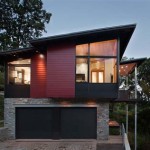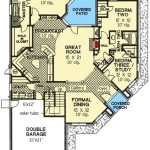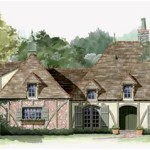Beach house plans on pilings are architectural designs for waterfront homes elevated above the ground on support columns known as pilings. These plans are specifically engineered to withstand coastal environments, providing protection from flooding, storm surges, and erosion.
These plans are particularly favored in areas prone to flooding or where the building site is located in a flood zone. By elevating the house on pilings, homeowners can minimize the risk of water damage and ensure the structural integrity of their property.
In the following sections, we will delve into the advantages, design considerations, and construction techniques associated with beach house plans on pilings. We will explore how these plans enhance the safety, durability, and overall functionality of waterfront homes.
Beach house plans on pilings offer several key advantages:
- Elevated protection from flooding
- Enhanced durability in coastal environments
- Unobstructed views and natural lighting
- Increased ventilation and airflow
- Reduced risk of moisture damage
- Potential for additional living space underneath
- Suitable for various soil conditions
- Enhanced property value
These plans combine functionality with aesthetic appeal, creating resilient and visually stunning waterfront homes.
Elevated protection from flooding
One of the primary advantages of beach house plans on pilings is their elevated protection from flooding. By raising the house above the ground level, these plans effectively mitigate the risk of water damage during storms, heavy rainfall, or rising tides.
The pilings, which are typically made of concrete, steel, or treated wood, are securely driven into the ground below the frost line, creating a stable foundation for the house. This elevation ensures that the living spaces and structural components remain above the floodwaters, preventing damage to the property and its contents.
Beach house plans on pilings are particularly beneficial in areas prone to coastal flooding, such as those located near oceans, rivers, or lakes. By elevating the house, homeowners can avoid the devastating consequences of floodwaters, including structural damage, mold growth, and loss of personal belongings.
Furthermore, elevated homes provide peace of mind to homeowners, knowing that their property is protected from potential flooding events. This can be especially important in areas where flooding is a recurring issue or where the risk of flooding is increasing due to climate change.
Enhanced durability in coastal environments
Beach house plans on pilings offer enhanced durability in coastal environments due to their elevated design and the use of resilient materials.
The elevation of the house on pilings protects it from the corrosive effects of salt water and sand. Coastal environments are known for their harsh conditions, including strong winds, salt spray, and high humidity. These elements can quickly deteriorate building materials, leading to costly repairs and maintenance.
By elevating the house above the ground, it is less exposed to these harsh conditions. The pilings act as a barrier, preventing salt water and sand from reaching the structural components of the house. This helps to extend the lifespan of the building and reduces the need for frequent repairs.
In addition to the elevation, beach house plans on pilings often incorporate durable materials that can withstand the coastal environment. These materials include:
- Concrete pilings: Concrete is a strong and durable material that is resistant to rot, decay, and insects. It is also fire-resistant, providing an additional layer of protection for the house.
- Steel pilings: Steel is another strong and durable material that is often used for pilings in coastal environments. Steel pilings are coated with a protective layer to prevent corrosion.
- Treated wood pilings: Wood pilings can be treated with preservatives to resist rot, decay, and insects. However, they may require more maintenance than concrete or steel pilings.
By using these durable materials, beach house plans on pilings can withstand the harsh conditions of coastal environments and provide long-lasting protection for the home.
Unobstructed views and natural lighting
Beach house plans on pilings offer unobstructed views and natural lighting due to their elevated design.
- Panoramic views
The elevation of the house on pilings provides panoramic views of the surrounding landscape. This can include views of the ocean, beach, river, or lake. The elevated perspective allows homeowners to enjoy the beauty of their surroundings from the comfort of their home.
- Natural lighting
The elevation of the house also allows for more natural light to enter the home. The windows and doors can be placed strategically to capture the sunlight and provide ample natural lighting throughout the day. This can help to reduce the need for artificial lighting and create a more inviting and comfortable living space.
- Reduced glare
The elevation of the house can also help to reduce glare from the sun. The pilings act as a barrier, blocking the direct sunlight from entering the windows. This can help to reduce eyestrain and create a more comfortable indoor environment.
- Increased privacy
The elevation of the house can also provide increased privacy. The pilings create a physical barrier between the house and the ground level, making it more difficult for people to see into the home. This can be especially beneficial for homes that are located in close proximity to other buildings or public areas.
Overall, the unobstructed views and natural lighting provided by beach house plans on pilings enhance the overall livability and enjoyment of the home.
Increased ventilation and airflow
Beach house plans on pilings offer increased ventilation and airflow due to their elevated design.
- Passive ventilation
The elevation of the house on pilings allows for passive ventilation. Passive ventilation is the natural movement of air through a building without the use of mechanical systems. The pilings create a gap between the ground and the house, allowing air to circulate freely underneath the house. This helps to keep the indoor air fresh and reduce moisture buildup.
- Cross ventilation
The elevation of the house also promotes cross ventilation. Cross ventilation is the movement of air through a building from one side to the other. The windows and doors can be placed strategically to capture the prevailing winds and create a cross breeze. This helps to cool the house down in the summer and reduce the need for air conditioning.
- Reduced humidity
The increased ventilation and airflow helps to reduce humidity levels in the house. Humidity can cause discomfort and lead to mold growth. The elevated design of beach house plans on pilings helps to keep the air circulating and reduce humidity levels, creating a more comfortable and healthy living environment.
- Improved indoor air quality
The increased ventilation and airflow also helps to improve indoor air quality. The fresh air that circulates through the house helps to dilute indoor pollutants, such as dust, dander, and VOCs (volatile organic compounds). This can help to improve the health and well-being of the occupants.
Overall, the increased ventilation and airflow provided by beach house plans on pilings create a more comfortable, healthy, and energy-efficient living environment.
Reduced risk of moisture damage
Beach house plans on pilings offer a reduced risk of moisture damage due to their elevated design.
Moisture can cause significant damage to a home, leading to mold growth, rot, and structural issues. The elevated design of beach house plans on pilings helps to keep the house dry and free from moisture damage.
The pilings create a gap between the ground and the house, which prevents moisture from rising up into the house through the foundation. This is especially important in areas with high humidity or flooding potential.
In addition, the elevated design allows for better ventilation and airflow underneath the house. This helps to keep the house dry and prevents moisture from accumulating.
Overall, the reduced risk of moisture damage provided by beach house plans on pilings helps to protect the home from costly repairs and maintenance, and it also creates a healthier living environment for the occupants.
Potential for additional living space underneath
Beach house plans on pilings offer the potential for additional living space underneath the house. This space can be used for a variety of purposes, such as a garage, workshop, storage area, or even a guest suite.
The space underneath the house is typically protected from the elements by the pilings and the elevated floor. This makes it an ideal location for storage or other activities that do not require a lot of natural light. The space can also be finished to create a more comfortable and inviting living area.
There are a number of advantages to having additional living space underneath a beach house on pilings. First, it can help to increase the overall square footage of the house without having to add on to the existing structure. This can be especially beneficial for smaller homes or for homes that are located on a small lot.
Second, the additional space can be used for a variety of purposes, which can help to make the home more functional and enjoyable. For example, the space could be used to create a home gym, a playroom for children, or a home office.
Overall, the potential for additional living space underneath a beach house on pilings is a valuable feature that can add value and functionality to the home.
Suitable for various soil conditions
Beach house plans on pilings are suitable for various soil conditions, including:
- Sand
Sand is a loose and granular soil that is common in coastal areas. Pilings can be easily driven into sand to create a stable foundation for the house. The pilings will distribute the weight of the house over a large area, preventing the house from sinking into the sand.
- Clay
Clay is a fine-grained soil that is also common in coastal areas. Clay can be more difficult to drive pilings into than sand, but it is still possible to create a stable foundation using the proper techniques. The pilings will need to be driven deeper into the clay to ensure that they reach a stable layer of soil.
- Silt
Silt is a soil that is composed of fine particles of sand, clay, and organic matter. Silt can be more difficult to drive pilings into than sand or clay, but it is still possible to create a stable foundation using the proper techniques. The pilings will need to be driven deeper into the silt to ensure that they reach a stable layer of soil.
- Peat
Peat is a soil that is composed of partially decayed organic matter. Peat can be very difficult to drive pilings into, but it is still possible to create a stable foundation using special techniques. The pilings will need to be driven very deep into the peat to ensure that they reach a stable layer of soil.
In addition to these soil conditions, beach house plans on pilings can also be used in areas with sloping or uneven terrain. The pilings can be adjusted to different lengths to create a level foundation for the house.
Overall, the versatility of beach house plans on pilings makes them a suitable option for a wide range of soil conditions and building sites.
The suitability of beach house plans on pilings for various soil conditions is a key advantage of this type of construction. It allows homeowners to build their dream home in a variety of coastal locations, regardless of the soil conditions.
Enhanced property value
Beach house plans on pilings can enhance the property value of a home in several ways:
- Increased desirability
Homes on pilings are often more desirable to buyers than homes on traditional foundations. This is because they offer a number of advantages, such as elevated views, protection from flooding, and increased durability. As a result, homes on pilings can command a higher sale price than similar homes on traditional foundations.
- Scarcity
Homes on pilings are not as common as homes on traditional foundations. This scarcity can make them more valuable, especially in areas where there is a high demand for waterfront property.
- Investment potential
Homes on pilings are a good investment because they are likely to appreciate in value over time. This is due to the increasing popularity of waterfront property and the scarcity of homes on pilings.
- Insurance benefits
Homes on pilings may be eligible for lower insurance rates than homes on traditional foundations. This is because they are less likely to be damaged by flooding or other natural disasters.
Overall, beach house plans on pilings can enhance the property value of a home in a number of ways. This makes them a good investment for homeowners who are looking to build a home that is both beautiful and valuable.










Related Posts








